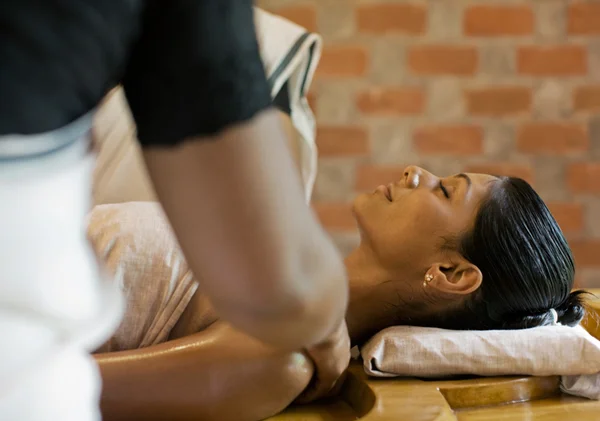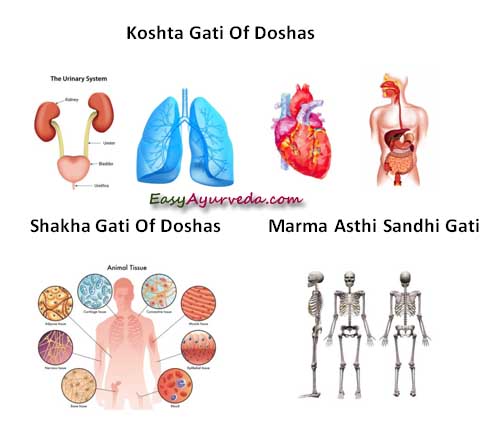Ask Ayurvedic doctor a question and get a consultation online on the problem of your concern in a free or paid mode. More than 2,000 experienced doctors work and wait for your questions on our site and help users to solve their health problems every day.
Shop Now in Our Store
Dosha Gati – Decoding the Journey of Ayurvedic Doshas

Introduction to Dosha Gati
Dosha Gati is a pivotal concept in Ayurveda, describing the natural movement and progression of the body's fundamental energies – Vata, Pitta, and Kapha. This principle of dosha gati helps practitioners understand how imbalances develop and how they affect physical and mental health. By studying dosha gati, individuals can gain insight into the root causes of ailments and adopt targeted Ayurvedic strategies to restore equilibrium and promote overall wellness.
Historical Roots & Ayurvedic Significance
The concept of dosha gati has deep roots in classical Ayurvedic texts, where the pathways and behavior of doshas are meticulously described. Ancient scholars detailed how the movement of doshas influences bodily functions, disease progression, and healing. Understanding dosha gati is essential for diagnosing imbalances and designing personalized treatment protocols, as it offers a window into the dynamic interplay between the body's internal environment and external influences.
Key Components & Therapeutic Benefits
Understanding Dosha Dynamics
Dosha gati involves several key aspects:
- Vata Movement: Governs nerve impulses, circulation, and elimination. Its irregular flow can lead to anxiety, dry skin, and joint issues.
- Pitta Progression: Controls metabolism, digestion, and transformation. An imbalanced dosha gati of Pitta may manifest as inflammation, acidity, and irritability.
- Kapha Trajectory: Influences structure, lubrication, and stability. Disturbances in dosha gati of Kapha can result in sluggish metabolism, congestion, and weight gain.
Therapeutic Benefits of Monitoring Dosha Gati
By comprehending dosha gati, Ayurvedic practitioners can:
- Detect early signs of doshic imbalance before clinical symptoms appear.
- Develop preventive strategies tailored to an individual’s unique dosha movement.
- Optimize dietary, lifestyle, and herbal interventions to harmonize the flow of doshas.
- Enhance the body's innate healing capabilities by addressing the root cause of imbalances.
How Dosha Gati Works: The Science Behind Dosha Movement
The theory of dosha gati centers on the dynamic and continuous movement of energy within the body. Each dosha follows specific pathways that govern physiological and psychological functions. When these movements become irregular due to lifestyle, environmental factors, or dietary indiscretions, the imbalance can disrupt normal bodily functions. Understanding dosha gati allows for targeted interventions that restore proper circulation of energy, ensuring that digestion, metabolism, and other vital processes operate harmoniously.
Choosing the Right Ayurvedic Approach
When addressing issues related to dosha gati, consider the following:
- Consult Certified Ayurvedic Practitioners: Personalized evaluations can determine your unique dosha movement and provide insights into correcting imbalances.
- Adopt a Tailored Diet: Foods that pacify the dominant dosha can help normalize dosha gati. For instance, a Pitta-pacifying diet may include cooling, hydrating foods, while a Vata-pacifying regimen might emphasize warm, nourishing meals.
- Integrate Mind-Body Practices: Yoga, meditation, and pranayama can promote the natural flow of doshas and mitigate the effects of environmental stressors.
Recommended Interventions & Lifestyle Adjustments
Optimizing dosha gati requires a holistic approach that combines various interventions:
- Herbal Remedies: Specific Ayurvedic herbs can target the imbalances in Vata, Pitta, and Kapha, facilitating a smoother dosha gati.
- Detoxification Therapies: Procedures like Panchakarma can cleanse the body of accumulated toxins, restoring the proper movement of doshas.
- Regular Exercise: Physical activity helps stimulate circulation and maintain the natural rhythm of dosha gati.
- Mindful Nutrition: Consuming foods that support the balanced flow of doshas is essential for preventing stagnation and promoting overall health.
Potential Imbalances & Precautions
Disruptions in dosha gati can manifest in various ways, and understanding these signs is crucial:
- Vata Imbalance: May cause anxiety, dryness, and joint pain if dosha gati of Vata becomes erratic.
- Pitta Disturbances: Can lead to inflammation, skin irritations, and digestive issues when Pitta’s pathway is disrupted.
- Kapha Overaccumulation: Results in sluggishness, congestion, and weight gain if the dosha gati of Kapha is impaired.
- Preventive Measures: Regular monitoring and timely intervention are key to maintaining a balanced dosha gati. Always seek professional guidance if symptoms of imbalance arise.
Frequently Asked Questions
What is dosha gati and why is it important?
Dosha gati refers to the natural movement and progression of the body’s three doshas—Vata, Pitta, and Kapha. Understanding this concept is essential as it helps in diagnosing imbalances early and formulating effective Ayurvedic treatment plans.
How can I identify an imbalance in dosha gati?
An imbalance in dosha gati may manifest as irregularities in digestion, mood fluctuations, or physical discomfort. A comprehensive assessment by an Ayurvedic practitioner can help pinpoint the specific dosha that is out of balance.
What role does diet play in maintaining dosha gati?
A diet tailored to your unique constitution can significantly influence dosha gati. Consuming foods that balance the dominant dosha helps maintain the natural flow of energy, thus supporting overall health and preventing the accumulation of toxins.
Are there specific therapies to correct disrupted dosha gati?
Yes, Ayurvedic therapies such as Panchakarma detoxification, herbal formulations, and lifestyle modifications are commonly used to restore the proper flow of dosha gati and alleviate symptoms of imbalance.
Can yoga and meditation influence dosha gati?
Absolutely. Yoga, meditation, and pranayama are effective practices for promoting the harmonious movement of doshas. They help reduce stress and encourage a balanced dosha gati by improving circulation and energy flow.
How long does it take to restore a balanced dosha gati?
The duration to achieve a balanced dosha gati varies among individuals. With consistent lifestyle changes, proper diet, and regular Ayurvedic interventions, many individuals notice improvements within a few weeks to a few months.
Where can I find authentic guidance on managing dosha gati?
Authentic guidance on dosha gati can be obtained from certified Ayurvedic practitioners, reputable Ayurvedic centers, and trusted resources such as Ayurvedic literature and research journals.
Conclusion & Expert Insights
Understanding dosha gati is central to mastering Ayurvedic principles and achieving holistic wellness. By recognizing the natural pathways of dosha movement, individuals can take proactive steps to correct imbalances, improve digestion, regulate metabolism, and enhance overall health. Embracing the principles of dosha gati through personalized Ayurvedic treatments and lifestyle modifications can pave the way for lasting well-being and vitality.
References & Further Reading
- Sharma, P.V. Ayurvedic Healing: A Comprehensive Guide.
- Lad, V. Ayurveda: The Science of Self-Healing.
- National Institute of Ayurveda –
- Journal of Ayurveda and Integrative Medicine for further research on dosha balance and Ayurvedic diagnostics.
This article is checked by the current qualified Dr Sujal Patil and can be considered a reliable source of information for users of the site.



